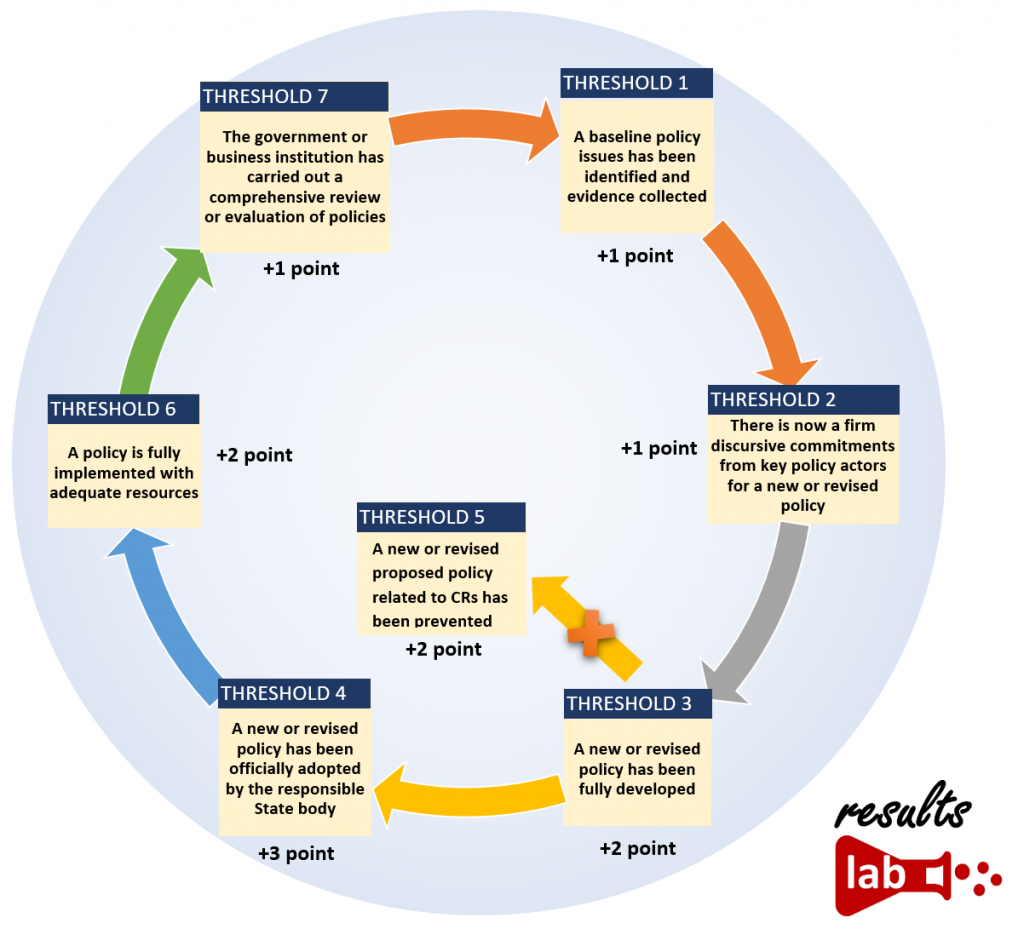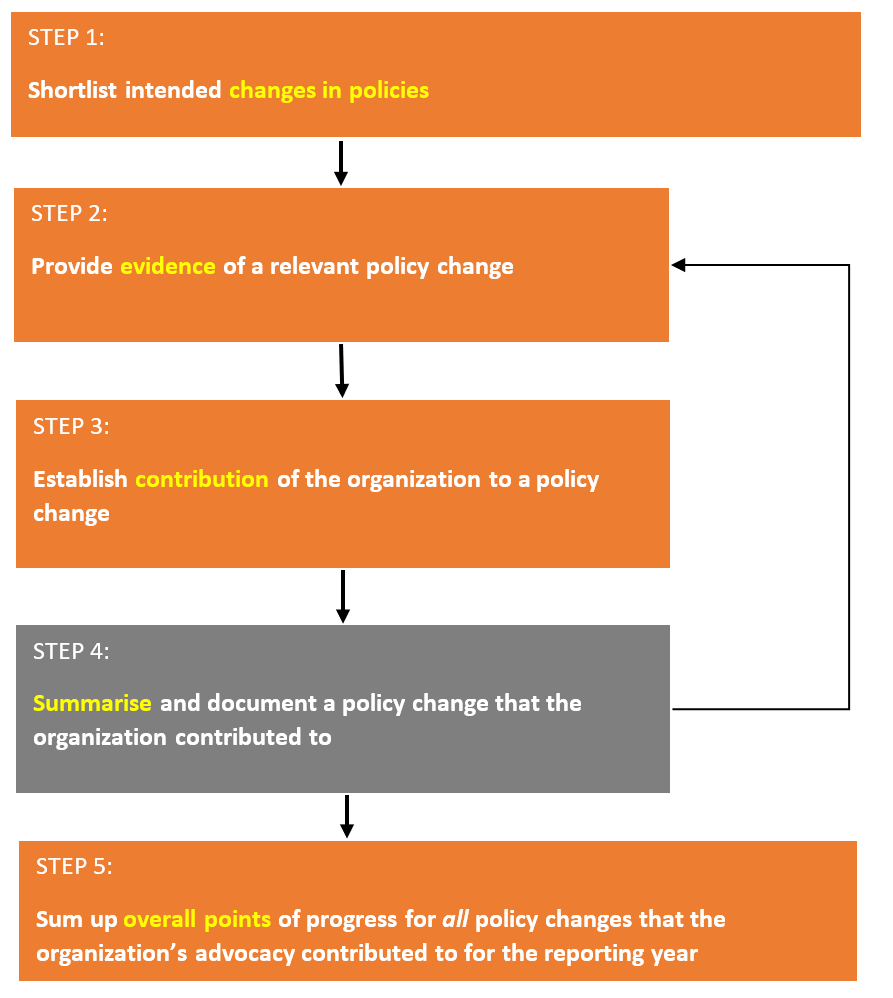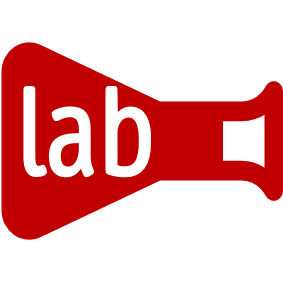Monitoring policy work is tricky.
But it doesn’t have to be. It’s not impossible – and certainly can be useful. Here is a proposal of how it can be done.
We need a tool!
This tool measures the extent to which an organization has influenced changes in policies. It can be used to monitor advocacy at the outcome level.
The tool allows a mix of numeric and qualitative monitoring and captures advocacy work before and after a policy or a law is adopted. Further, the tool captures the incremental progress of advocacy using weighted thresholds and a point system. Each reported step must be accompanied by a) evidence and b) a contribution assessment. The narrative elements of this indicator can be used for aggregated narrative reporting.
What are we talking about?
For this proposed tool, advocacy is a programme strategy that contributes to improvements in outcomes. It is the deliberate process, based on demonstrated evidence, to directly and indirectly, influence decision-makers, stakeholders, and relevant audiences.
Policy refers to public policy. Public policy is a system of laws, regulatory measures, and financing for child rights promulgated by a government entity or its representatives.
The Seven-Stage Policy Cycle
The tool uses an advocacy monitoring framework with seven thresholds in the policy cycle. For each threshold that is crossed, the organization can claim between one and three points of progress.

Assess progress in five steps
On an annual basis, the organization can carry out a five-step assessment to determine if any policy threshold has been crossed during the reporting period:

The five steps of the annual assessment are:
First, scan and shortlist intended changes in policies that the organization’s advocacy work may have contributed to.
Second, provide evidence that a significant positive change has occurred in the reporting period. Do that for each policy change identified in STEP 1.
Third, establish and credibly document that advocacy has contributed to this policy change. Do that for each policy change identified in STEP 1.
Fourth, summarize and document the relevant policy change that has occurred and that the organization contributed to. Do that for each policy change identified in STEP 1.
Fifth, sum up the overall progress in points from all policy changes that the organization’s advocacy has contributed to for a given year.
